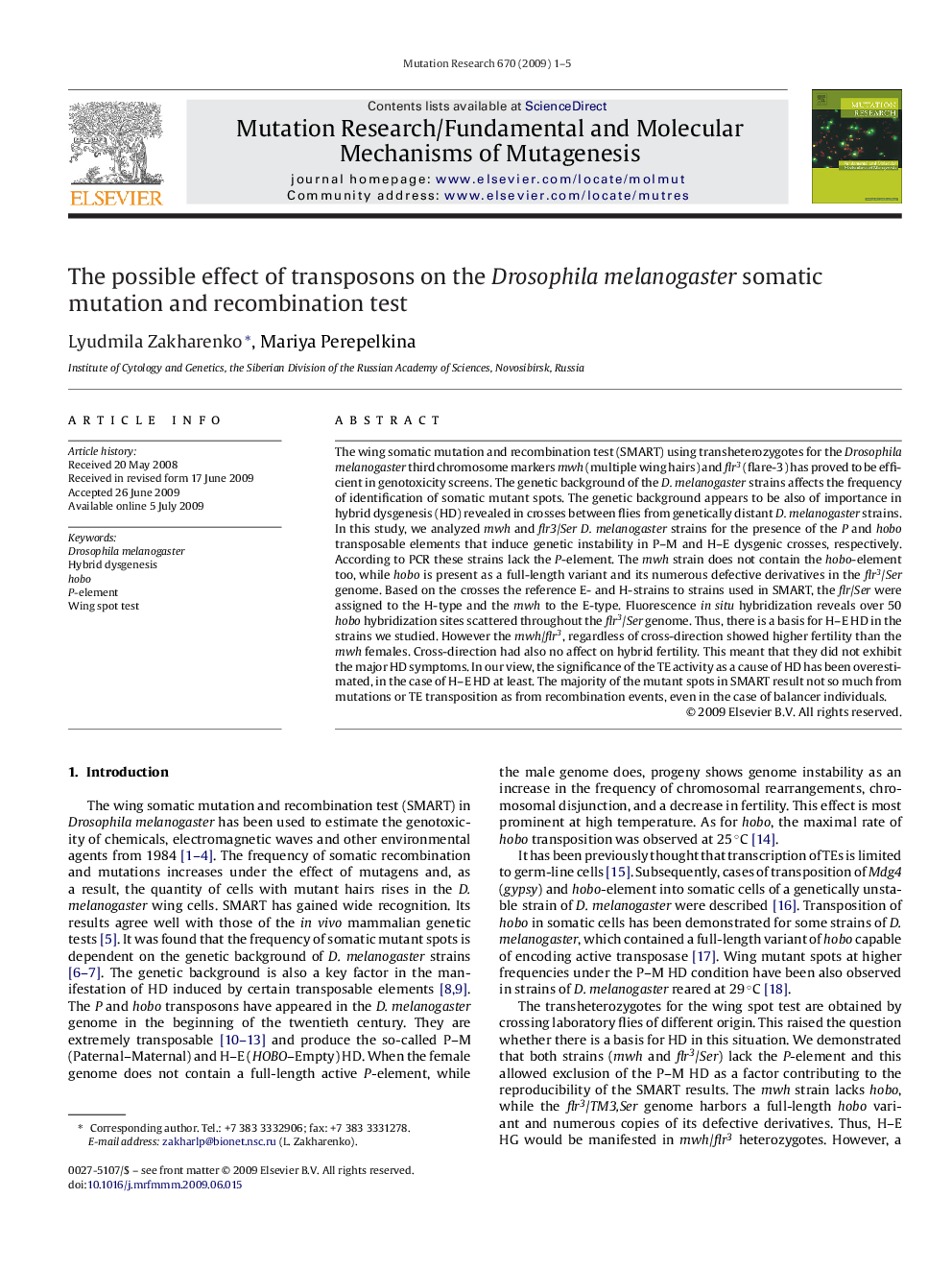| Article ID | Journal | Published Year | Pages | File Type |
|---|---|---|---|---|
| 2146890 | Mutation Research/Fundamental and Molecular Mechanisms of Mutagenesis | 2009 | 5 Pages |
The wing somatic mutation and recombination test (SMART) using transheterozygotes for the Drosophila melanogaster third chromosome markers mwh (multiple wing hairs) and flr3 (flare-3) has proved to be efficient in genotoxicity screens. The genetic background of the D. melanogaster strains affects the frequency of identification of somatic mutant spots. The genetic background appears to be also of importance in hybrid dysgenesis (HD) revealed in crosses between flies from genetically distant D. melanogaster strains. In this study, we analyzed mwh and flr3/Ser D. melanogaster strains for the presence of the P and hobo transposable elements that induce genetic instability in P–M and H–E dysgenic crosses, respectively. According to PCR these strains lack the P-element. The mwh strain does not contain the hobo-element too, while hobo is present as a full-length variant and its numerous defective derivatives in the flr3/Ser genome. Based on the crosses the reference E- and H-strains to strains used in SMART, the flr/Ser were assigned to the H-type and the mwh to the E-type. Fluorescence in situ hybridization reveals over 50 hobo hybridization sites scattered throughout the flr3/Ser genome. Thus, there is a basis for H–E HD in the strains we studied. However the mwh/flr3, regardless of cross-direction showed higher fertility than the mwh females. Cross-direction had also no affect on hybrid fertility. This meant that they did not exhibit the major HD symptoms. In our view, the significance of the TE activity as a cause of HD has been overestimated, in the case of H–E HD at least. The majority of the mutant spots in SMART result not so much from mutations or TE transposition as from recombination events, even in the case of balancer individuals.
